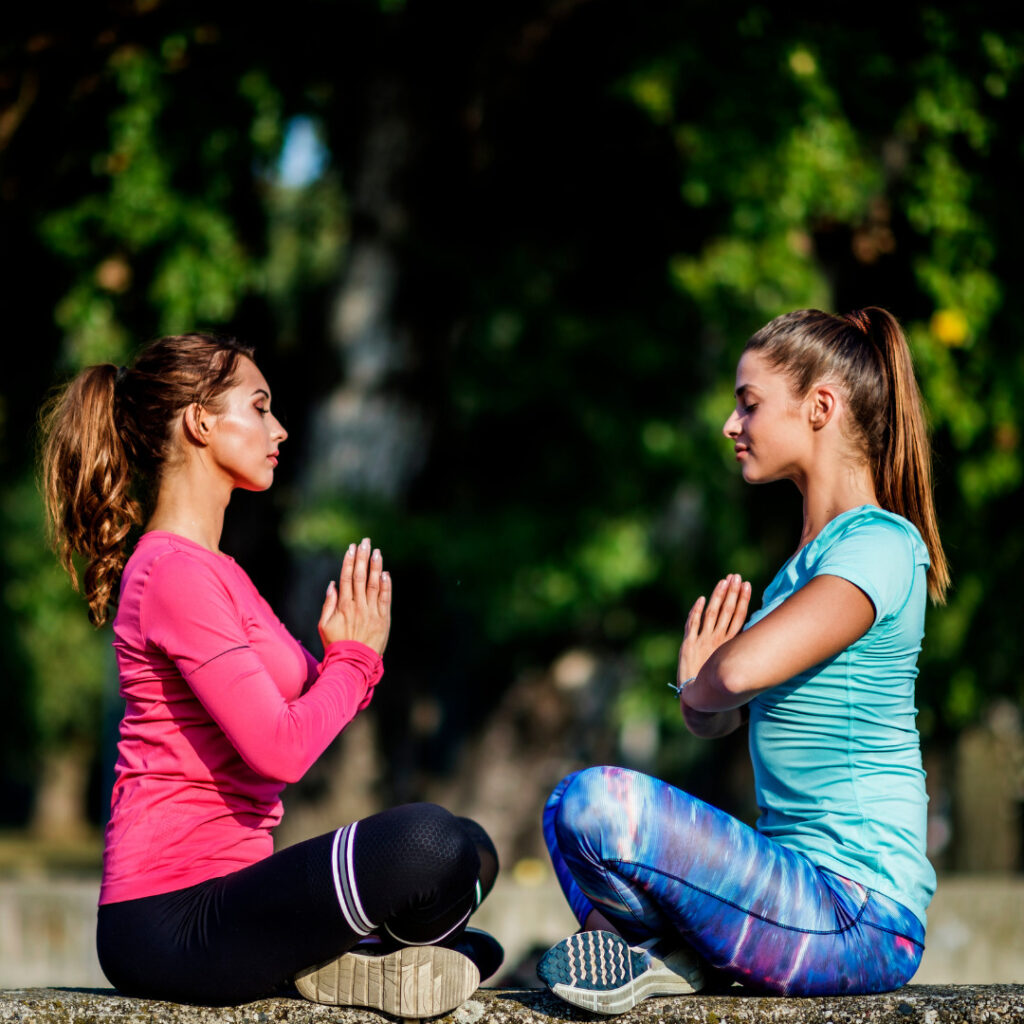
There are many different ways you can sequence a yoga class. Depending on the style of yoga you are teaching, your audience, and your intention, you can really cater to each choice you make to support the context you are in. There are so many types of yoga teacher trainings out there and along with that variations in each style. What’s great is each style of yoga has its own set of benefits. Overall, Yoga is intended to bring about healing and relieve suffering.
Vinyasa
Vinyasa yoga seeks to unite breath with movement to create a mindful and meditative state of self-study. You will often hear the phrase “breath to movement” associated with a Vinyasa Yoga class. In a Vinyasa yoga sequence, you will see a general structure that includes time to tune in, set the breath, warm-up, flow and cool down before resting in the final savasana. Using this as the backbone of your sequence, you can begin to add more subtle nuances such as themes. Within the umbrella of vinyasa classes, there are many ways one can sequence a class. You might sequence a chair-supported vinyasa sequence where students utilize the chair to get up and down off the floor. You might sequence a slow flow where the students are holding statically in each pose for a few rounds of breath. You might be holding space for a group of beginner yoga students who require less complex sequences and more straightforward transitions.
Beginner
When you begin to sequence for beginners, it can be helpful to try and place yourself in the shoes of someone who may have never been to a yoga class before. How might you adapt your class to be welcoming to all levels of students? During a one-hour beginner yoga class, you might expand your warm-up and your cool down a bit more, creating space for slower, intentional movements on either side of your flow. This can help to ease the students into what a yoga class might feel like.
Beginners typically lack the same level of proprioception as more advanced students. This means that they are less familiar with their bodies and where they are in space. For example, they may be in an extended side angle thinking that their top arm is hugging their bicep when in reality they are lifting their arm straight up to the sky. You might consider guiding the students through each micro-movement needed to get into each pose. This might then create a slower-paced class. You might also consider ways in which you can incorporate education into beginner classes.
Advanced Power
An advanced power yoga class can be quite intense and vigorous. A Power yoga class is just as it sounds; you might move a bit quicker in a power class. You also might take less supported poses and more variations. Advanced yoga classes typically include more intense postures and quicker transitions. More intense postures might include arm balances such as crow pose, or flying crow pose. They might also include inversions such as headstand or forearm stand. You might include a lot of dynamic movement in an advanced power class, building up the muscles and connecting breath to movement. Because of this, it is typically encouraged that students have experience with yoga before attending an Advanced Power Yoga class.
Yoga Balancing Sequence
Finally, balancing yoga sequences can be quite challenging but also have an element of fun and playfulness to them. There are many different ways you could incorporate balancing poses into your yoga class to create a balancing sequence. For example, in your flow, you might include a one-legged tadasana to tree pose, tree pose to warrior three, and warrior three to standing splits before taking a vinyasa and coming back to the top of the mat. Another example could be coming to high crescent lunge from three-legged dog, then stepping into one-legged tadasana from high crescent lunge before coming into figure fourchair pose or even a variation of dancing shiva pose.
As you can see, there are endless options for you to sequence a yoga class. We encourage you to find your sense of self within your sequence, creating something that feels authentic, engaging and empowering.
